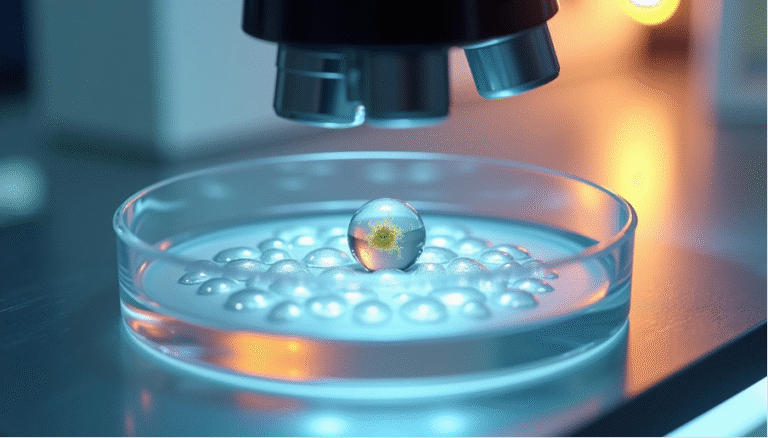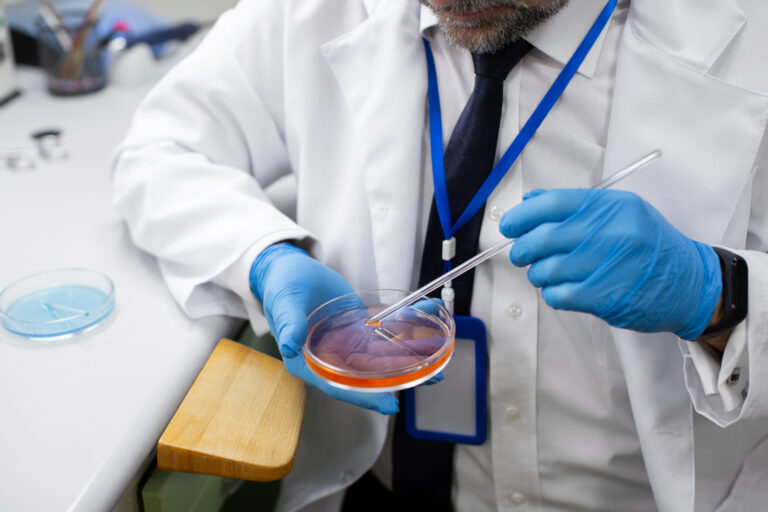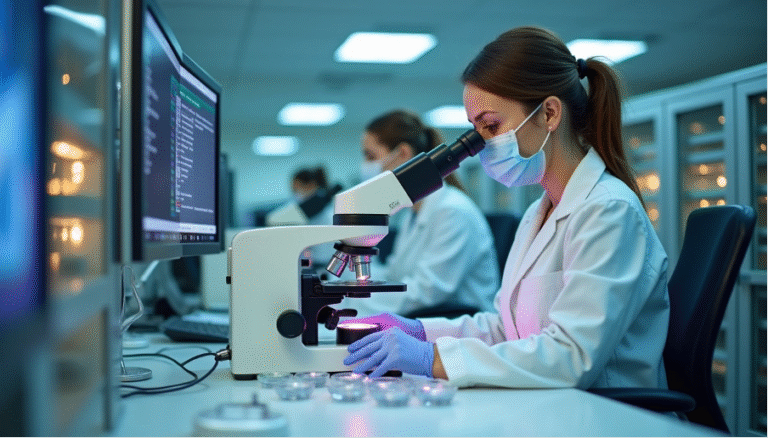Statistics show that 10% to 15% of couples face fertility challenges. The first successful IVF birth happened in 1978, and this revolutionary procedure has helped bring over 5 million babies into the world. Today.
People who think about IVF treatment need to understand what the process involves before they start their treatment. IVF isn’t just one procedure – it’s a series of carefully coordinated steps that takes about 6-8 weeks from the first consultation to embryo transfer. The treatment has several stages: ovarian stimulation, egg retrieval, fertilisation, embryo culture, and embryo transfer. Women under 35 have around a 35% success rate with IVF, while this number drops to 10-20% for women over 40.
This complete guide walks you through each stage of the IVF process and helps you prepare physically and emotionally for your treatment. You’ll find clear, straightforward information that builds your confidence, whether you’re exploring fertility options or ready to start your first cycle.
Getting Started: What First-Time Patients Should Know
People facing fertility challenges need to understand their treatment options. In vitro fertilisation (IVF) combines eggs and sperm in a controlled laboratory environment before doctors transfer resulting embryos to the uterus. Here’s what you need to know before you start your first IVF treatment.
Understanding IVF basics
IVF combines several procedures that help with fertility, prevent genetic problems, and assist in conception. The process has multiple stages: ovarian stimulation, egg retrieval, fertilisation in a laboratory setting, embryo development, and embryo transfer to the uterus. Doctors recommend IVF when other fertility treatments haven’t worked or aren’t likely to work. Medical guidelines suggest you should think about IVF if you haven’t achieved pregnancy after 12 months of regular unprotected intercourse (if under 35) or after 6 months (if over 35). IVF often gives the best chance of success for couples with unexplained infertility—which makes up about 30% of infertility cases.
You might need IVF if you have:
- Blocked or damaged fallopian tubes
- Severe male factor infertility (low sperm count or poor motility)
- Endometriosis
- Polycystic ovary syndrome (PCOS)
- Need for genetic testing of embryos
- Unexplained infertility after other treatments
How IVF is different from other fertility treatments
IVF creates embryos outside the body, unlike simpler fertility treatments. Intrauterine Insemination (IUI), the most common alternative, places specially prepared sperm directly into the uterus near ovulation time. The main differences between IVF and other fertility treatments include:
- Complexity and invasiveness: IVF needs egg retrieval and laboratory procedures, while IUI just places sperm in the uterus. IUI is simpler than IVF.
- Success rates: IVF has better success rates compared to IUI. Patients under 35 can see IVF success rates around 40-50% per cycle, while IUI success rates stay lower at about 10%.
- Treatment approach: The American Society for Reproductive Medicine suggests starting with IUI and controlled ovarian stimulation for some patients. Doctors often suggest moving to IVF if pregnancy doesn’t happen after several IUI attempts. Women who are older or have specific fertility issues might need to start with IVF to save time.
Questions to ask your doctor
Your first consultation should give you clear answers. You might want to ask:
- What specific fertility tests will I need before starting treatment? Clinics usually need blood tests to check ovarian reserve, ultrasounds, and semen analysis for male partners.
- What’s your clinic’s success rate for couples like us? Success rates change based on individual factors.
- How many embryos should we transfer, and what about multiple pregnancy risks? Modern clinics usually suggest single embryo transfers to reduce risks.
- How long will my treatment cycle take? Most stimulation cycles last 10-14 days, plus extra time if you need embryo testing.
- What risks or side effects should I watch for? Ovarian hyperstimulation syndrome and emotional stress are common concerns.
- What changes should I make to my lifestyle? A healthy weight, good diet, and less alcohol often help.
These basics will help you guide through your first IVF cycle with confidence and realistic expectations.
The IVF Journey: Step-by-Step Overview
The IVF experience has several carefully coordinated steps that maximise your chances of success. Here’s what happens from your first appointment through to the pregnancy test.

1. Consultation and diagnosis
Your first meeting will be with fertility specialists who assess your medical history and talk about treatment options. Your doctor will walk you through the IVF process and answer your questions. This step has a complete examination and early tests to spot potential fertility issues. Your doctor will use this information to decide if IVF suits your situation or if other treatments might work better.
2. Pre-treatment testing and planning
Both partners need complete screening before treatment begins. These tests have:
- Blood tests for infectious diseases like HIV, hepatitis B and hepatitis C
- Ovarian reserve testing to check egg supply
- Semen analysis to check sperm count, shape and movement
- Uterine cavity evaluation to examine the uterus’s lining
On top of that, your doctor might do a practise embryo transfer to find the best technique for your actual procedure. Your fertility team will create your personalised treatment plan once all tests are done.
3. Ovarian stimulation and monitoring
The stimulation phase starts on day one of your period. You’ll take hormone medications (usually through self-administered injections) that help your ovaries produce multiple eggs instead of just one egg each month. This phase usually takes 8-14 days.
Your response is monitored through:
- Transvaginal ultrasound scans to measure follicle size and number
- Blood tests to check hormone levels, especially estradiol
Your medication dosage might change based on these results. You’ll get a “trigger shot” when your follicles reach the right size (usually bigger than 14mm). This shot helps your eggs complete their final maturation.
4. Egg retrieval and sperm preparation
The egg retrieval happens 34-36 hours after the trigger injection. This procedure takes 15-20 minutes under sedation. A thin needle goes through your vagina into the ovaries to collect fluid from each follicle containing eggs. Your partner provides a semen sample at this time, or donor/frozen sperm gets prepared. The lab processes the sperm sample to select the healthiest sperm for fertilisation.
5. Fertilisation and embryo culture
The lab combines eggs and sperm after retrieval. Fertilisation happens through standard insemination (mixing eggs and sperm) or intracytoplasmic sperm injection (ICSI), where they inject a single sperm directly into each mature egg. Embryologists look for successful fertilisation 16-18 hours later. Fertilised eggs develop in special culture mediums for 5-7 days until they reach the blastocyst stage. The lab team watches and grades embryo quality based on cell number, symmetry, and development.
6. Embryo transfer and waiting period
The final step transfers one or more embryos into your uterus using a thin, flexible catheter through your cervix. This quick 10-minute procedure feels like a cervical smear test and doesn’t usually hurt. The next 9-14 days involve waiting for your blood pregnancy test. You might need to take progesterone supplements during this time to support your uterine lining.
Preparing Your Body and Mind for IVF
Getting ready for IVF goes beyond medical procedures. Your body and mind need the right preparation to boost your chances of success.
Healthy habits before and during treatment
Your body needs 3-6 months to adjust to healthy lifestyle changes before starting IVF treatment. Good nutrition plays a key role in this preparation. Here’s what you should eat:
- Green leafy vegetables like kale and spinach
- Whole grains, brown rice, and quinoa
- Legumes, particularly soybeans and lentils
- Berries, avocados, and olive oil
- Eggs, milk, and yoghurt
Good nutrition paired with the right exercise helps maintain a healthy weight. Walking and yoga work best during the IVF process. Keep your coffee intake to 1-2 cups daily, since drinking more can reduce pregnancy success chances by up to 50%. You should completely avoid smoking and alcohol because they lower IVF success rates by a lot.
Managing stress and emotional health
IVF can be as emotionally challenging as losing a family member or going through separation. Research shows stress doesn’t affect IVF success rates, but taking care of your emotional health matters for your wellbeing. Mindfulness, meditation, and journaling help manage stress effectively. Spend 20 minutes each day talking about IVF concerns with your partner, then put “fertility talk” aside to keep your emotions balanced. Many couples find professional counselling helpful, especially when anxiety or emotional blocks surface.
Partner support and communication
Your partner’s presence throughout the IVF experience makes everything easier to handle. Going to appointments together shows support and provides emotional comfort. Partners can help by taking care of household tasks. Simple things like grocery shopping, cooking meals, or doing laundry reduce your physical load. Physical closeness through non-sexual touch and cuddling keeps your connection strong during this tough time. Talk about your expectations early. Decide who will attend appointments, how you’ll handle pregnancy test day, and who you’ll tell about the treatment. This planning creates a strong foundation as you both go through the IVF process together.
Understanding Outcomes and Next Steps
IVF outcomes need patience and realistic expectations. The path to fertility success isn’t a simple yes or no answer.
How success is measured
Doctors measure IVF success through live birth rates instead of just positive pregnancy tests. Women under 35 show live birth rates around 40% per cycle. Clinics keep track of clinical pregnancy rates when ultrasounds confirm a gestational sac and live birth rates when healthy babies arrive. The complete picture comes from cumulative live birth rate (CLBR), which shows your total success chances across multiple embryo transfers from one stimulation cycle.
What happens if IVF fails?
IVF failure happens often even at top fertility centres. The biggest problems usually include:
- Poor egg or embryo quality
- Chromosomal abnormalities in embryos
- Endometrial receptivity issues
- Implantation failure
- Insufficient uterine environment
A failed cycle can leave you emotionally devastated. Your feelings are valid—the emotional toll of IVF failure feels like a deep personal loss.
Options after an unsuccessful cycle
The journey doesn’t end with disappointment. You have several paths forward:
- Follow-up consultation: Your fertility specialist should see you about six weeks after the failed attempt. This meeting helps review what happened and plan changes for future cycles.
- Protocol adjustments: Your doctor might change medication doses or try different stimulation protocols based on your body’s response.
- Alternative approaches: You could explore more options like preimplantation genetic testing, donor eggs or sperm, or adoption and surrogacy.
Success often comes with later attempts. Research shows younger women under 35 with unexplained infertility got pregnant after their first IVF didn’t work.
Making Informed Choices About IVF
Choosing the right fertility clinic plays a vital part in your IVF process. Your decisions at this stage will affect your experience and outcome.
Evaluating clinic success rates
The CDC and Society for Assisted Reproductive Technology (SART) publish yearly success data from reporting fertility clinics. You should focus on live birth rates specific to your age group. In spite of that, success rates change based on multiple factors such as patient characteristics, treatment protocols, and embryo quality. High success rates might reflect selective patient acceptance rather than superior treatment.
Understanding treatment costs
Basic IVF treatment costs in India range from ₹90,000 to ₹1,60,000 per cycle. The additional expenses include:
- Medications (₹50,000-₹80,000 per cycle)
- Consultation fees (₹500-₹2,000)
- Diagnostic tests (₹5,000-₹10,000)
- Specialised procedures like embryo freezing
IVF treatments are not covered by most health insurance policies in India. You should look for clinics that offer EMI options or financing arrangements.
Considering donor or surrogate options
Some patients need donor options because of poor egg quality, diminished ovarian reserve, or genetic concerns. Surrogacy costs are much higher, usually between ₹12-18 lakhs, and can reach ₹42 lakhs or more. The process involves creating embryos through IVF using the intended parents’ or donors’ genetic material, which are then transferred to the surrogate.
Conclusion
Starting your IVF experience demands physical preparation and emotional strength. Each step of this complex process from your first consultation to embryo transfer becomes clearer when you understand what’s ahead. Your grasp of success rates, treatment protocols, and potential risks helps set realistic expectations for the road ahead.
Getting your body ready is vital to boost your chances of success. Making dietary changes, doing moderate exercise, and staying away from alcohol and tobacco can substantially improve your body’s preparedness. Your mental health needs just as much attention during this emotional time. Managing stress, talking openly with your partner, and seeking professional counselling provide the support you need.
IVF might not work the first time around. All the same, you have several options after unsuccessful cycles, such as adjusting protocols or trying different approaches. Many patients reach their goal after additional attempts, especially with supportive specialists who can fine-tune treatment plans based on past experiences.
Finding the right fertility clinic is a vital part of your decision-making process. Age-specific success rates, costs, and financing options shape this important choice. A detailed understanding of these elements helps you make informed decisions throughout your fertility experience.
Note that IVF brings hope despite its challenges. Millions of families across the globe have become parents through this remarkable medical advancement. Knowledge, support, and determination give you everything you need to direct your path through these complexities. The path might feel uncertain at times, but the chance to hold your child makes every step count.
Key Takeaways
Understanding the IVF process empowers first-time patients to navigate this complex fertility journey with confidence and realistic expectations.
- IVF involves six key stages over 6-8 weeks: consultation, testing, ovarian stimulation, egg retrieval, fertilisation, and embryo transfer
- Success rates vary significantly by age – women under 35 have 40-50% success rates per cycle, dropping to 10-20% over 40
- Physical preparation through proper nutrition, moderate exercise, and eliminating alcohol/smoking optimises treatment outcomes
- Emotional support and stress management are crucial – the process can be as emotionally challenging as experiencing significant loss
- Multiple treatment options remain after unsuccessful cycles, with many patients achieving success on subsequent attempts
- Choosing the right clinic requires evaluating age-specific success rates, understanding costs (₹90,000-₹1,60,000 per cycle in India), and considering financing options
The IVF journey demands both physical readiness and emotional resilience, but with proper preparation and support, it offers genuine hope for achieving parenthood.
FAQs
Q1. What are the key stages of the IVF process for first-time patients? The IVF process typically involves six main stages: initial consultation and diagnosis, pre-treatment testing, ovarian stimulation, egg retrieval and sperm preparation, fertilisation and embryo culture, and finally, embryo transfer. The entire process usually takes about 6-8 weeks from start to finish.
Q2. What are the success rates for IVF treatment? Success rates vary significantly based on age and individual factors. For women under 35, the success rate is around 40-50% per cycle. However, this decreases to about 10-20% for women over 40. It’s important to discuss specific success rates with your clinic, as they can vary.
Q3. How can I prepare my body for IVF treatment? Preparing for IVF involves adopting healthy lifestyle habits. Focus on a balanced diet rich in vegetables, whole grains, and lean proteins. Maintain a healthy weight through appropriate exercise like walking or yoga. Limit caffeine intake and completely avoid alcohol and smoking. These changes can significantly improve your chances of success.
Q4. How long should I wait before trying another IVF cycle if the first one fails? After an unsuccessful cycle, it’s generally recommended to schedule a follow-up consultation with your fertility specialist about six weeks later. During this meeting, your doctor will review what happened and suggest potential changes for future cycles. The timing of your next cycle will depend on various factors, including your emotional readiness and any adjustments to the treatment protocol.
Q5. What are the typical costs associated with IVF treatment in India? In India, basic IVF treatment costs typically range from ₹90,000 to ₹1,60,000 per cycle. Additional expenses often include medications (₹50,000-₹80,000 per cycle), consultation fees (₹500-₹2,000), and diagnostic tests (₹5,000-₹10,000). It’s important to note that most health insurance policies in India do not cover IVF treatments, so consider clinics offering EMI options or financing arrangements.
Disclaimer: This article is for informational purposes only and does not constitute medical advice. Always consult with a qualified healthcare provider for personalised guidance regarding fertility treatments





